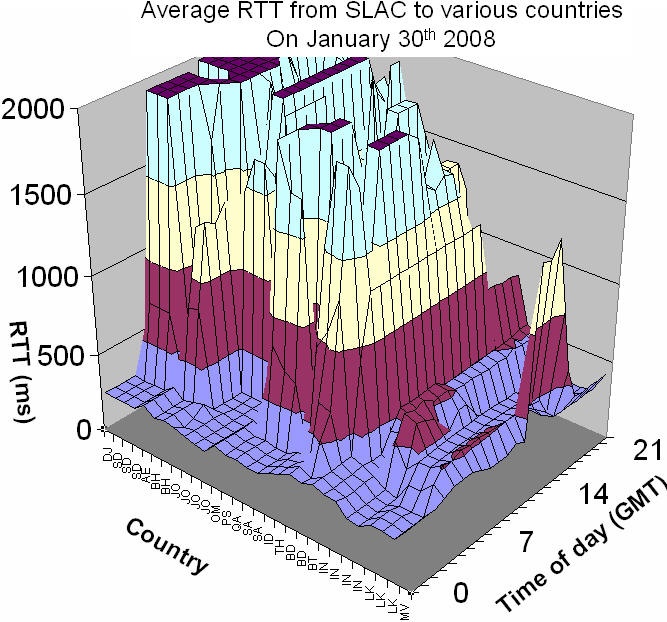...
It also needs to be stressed that not all hosts in all countries were impacted, e.g. India: 2 of 8; Sri Lanka 3 of 5; Malvinas 3 of 5; Indonesia 1 of 7; Turkey: 1 of 3; Thailand 1 of 6. On the other hand all monitored hosts were impacted in: UAE(1), Bangladesh(2), Bahrain(2), Djibouti(1), Jordan(4), Oman(1), Qatar(1), Saudi Arabia(2). The numbers in parentheses are the number of hosts monitored. The list of countries in this region that have PingER monitored hosts, but none of the monitored hosts were noticeably impacted is also interesting. It includes: Egypt, Ethiopia, Iran, Israel, Lebanon, Pakistan, Palestine, Sudan, Central Asia, the Caucasus and East Asia. Some of these were lucky that they did not make major use of either of the two cables (e.g. Palestine is mainly served by SEAMEWE3), others had totally different routes from SLAC (e.g. via the Pacific for East Asia), others such as Israel had other alternate paths, other used satellite (e.g. Central Asia). We also did not observe complete loss of connectivity, associated with the outage, for any host.
Looking in more detail at the impact hoiur by hour on January 30th we get the Figure below. IT shows the hourly average RTTs on January the 20th from SLAC to 30 impacted hosts in 17 countries. In this graph the vertical (Average RTT) is chopped off at 2 seconds, though some hosts took up to almost 10 seconds to respond at times. It can be seen that the impact (sudden increase in RTT) is very abrupt. The time of the impact varies by 2-3 hours. Most hosts continued to respond apart from 3 in Sudan and 1 in Bahrain, each of which did not respond for up to an hour. The magnitude of the impact also varies by more than an order of magnitude from country to country.
